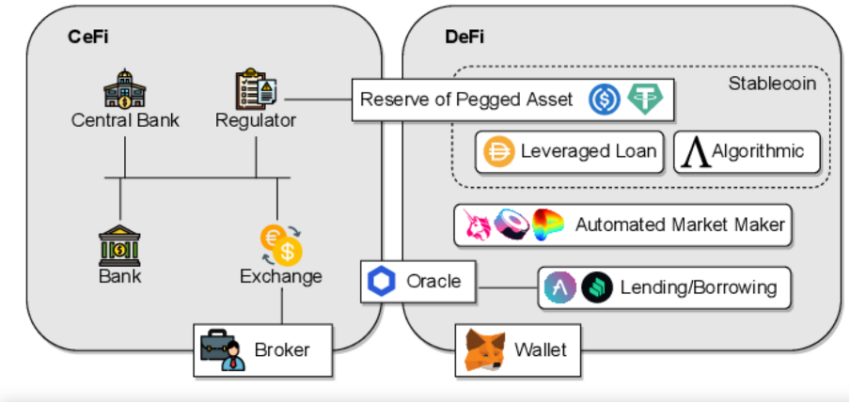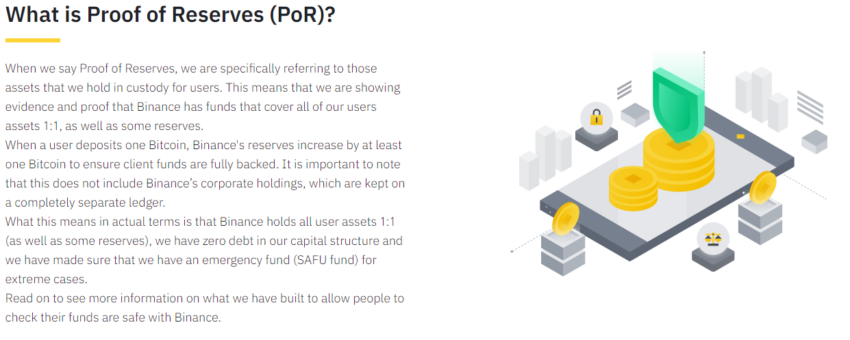Binance CEO Changpeng Zhao draws complementary roles between centralized finance (CeFI) and decentralized finance (DeFi). But how can the market balance these imperatives while respecting the crypto market’s inherently decentralized character?
The cryptocurrency market has come a long way since its inception. Initially, it was an entirely decentralized space with peer-to-peer transactions and no central authority. However, with the rise of centralized exchanges, the market has become more centralized, leading to a debate between CeFi and DeFi.
Centralized finance (CeFi) refers to financial institutions or exchanges that operate within a centralized framework. On the other hand, decentralized finance (DeFi) refers to a system of financial applications and protocols that run on a decentralized blockchain network.
Both CeFi and DeFi have their strengths and weaknesses. While CeFi is more user-friendly and offers greater liquidity, DeFi is more transparent and gives users greater control over their assets. Nonetheless, the global macroeconomy, including the traditional financial and cryptocurrency markets, has had a problematic past. The crypto sector has faced multiple instances of crashes, hacks, scams, and bankruptcies.
Finding a Balance—Is There a Way?
One big bankruptcy disaster that shook the world was the fall of FTX, the second-largest CeFi-based crypto exchange after Binance. Since then, CeFi has been tugged under heavy scrutiny and criticism. To strike a balance between the two, the market needs to find a way to leverage the strengths of both while mitigating their weaknesses.

One way to achieve this is by bridging the gap between CeFi and DeFi through decentralized exchanges (DEXs). DEXs allow users to trade cryptocurrencies without intermediaries, making them a crucial part of the DeFi ecosystem. However, the challenge with DEXs is that they need more liquidity, which is where CeFi comes in.
Integrating with CeFi allows DEXs to access greater liquidity and offer users a better trading experience. This integration can happen in two ways. The first is through centralized order books, where orders are processed through a centralized entity that matches buy and sell orders. The second is through liquidity pools, where users can pool their assets together to create a market for trading.
Another way to strike a balance between CeFi and DeFi is by leveraging decentralized finance infrastructure. Decentralized infrastructure, such as oracles and identity verification, can be used by both CeFi and DeFi platforms. For example, CeFi platforms can use oracles to access real-time market data, and DeFi platforms can use identity verification to prevent fraudulent activities.
Can the Market Achieve a Balance?
The integration of CeFi and DeFi can also be achieved through tokenization. Tokenization creates digital tokens representing assets like stocks, bonds, or real estate. It further allows traditional assets to be traded on blockchain networks, making them more accessible to investors and traders. Tokenization can also be used to create hybrid financial products that combine the features of CeFi and DeFi.
For example, a hybrid product can use a centralized platform to offer greater liquidity while leveraging a decentralized network to provide transparency and security.
Finally, the market can strike a balance between CeFi and DeFi by promoting interoperability. Interoperability refers to the ability of different blockchain networks to communicate and share data. By promoting interoperability, CeFi, and DeFi platforms can work together to offer users a seamless trading experience.
Interoperability can also help to reduce the risks associated with centralized platforms, such as hacks and fraud. By integrating with DeFi protocols, CeFi platforms can benefit from the security and transparency of blockchain networks, reducing the risk of fraud and hacking.
Binance Head Shares His Take on the Matter
Changpeng Zhao, the colorful and often elusive CEO of Binance, gave his take regarding this matter. He spoke virtually at the Hong Kong Web3 Conference. Key topics of the fireside with CZ included asset security, trust, user experience, regulation, CeFi vs. DeFi, mass adoption, and the industry’s future.
Firstly, the interviewer brought up the debate of security being stronger in CeFi or its decentralized counterpart. Zhao stated:
“CeFi and DeFi have different characteristics; one is not safer than the other. For both CeFi and DeFi, there is a need to take security measures into consideration.”
Speaking further, he suggested the need for transparency for a CeFi company. This can be achieved by conducting a thorough proof of reserves. This helps in verifying through the blockchain that users’ funds are safe.

On the contrary, in DeFi, securing private keys to wallets is crucial. But some still remain vulnerable due to the complexity that’s required. ‘Both CeFi and DeFi have different characteristics regarding risk and security. We shouldn’t take a one-sided view that one is better than the other,’ he added.
Obvious Differences
Nevertheless, in the current point, the difference exists. One of the main criticisms of CeFi is that it runs counter to the decentralized ethos of cryptocurrencies. Last year’s collapses added more support that hindered CeFi’s credibility. However, Zhao thinks otherwise.
“CeFi is not against DeFi. Neither should DeFi be against anybody. In a purely decentralized space, everyone would be for themselves. When you form projects and initiatives, that is centralization. There will always be pockets of centralization, even within the decentralized space.”
The largest crypto exchange by volume has faced scrutiny surrounding its transparency. Regulators have jumped on the opportunity to target the exchange without fail. For instance, Binance is under investigation in Brazil by the Federal Prosecutor’s Office and Federal Police, according to a report in Valor Econômico newspaper. The cryptocurrency exchange has allegedly been helping clients evade a stop order on cryptocurrency derivatives investments.
One of the most critical components to lure users to centralized institutions/exchanges is gaining trust. Users can increase their trust in CeFi companies by conducting thorough research before using their services. This includes the company’s reputation, track record, security measures, and regulatory compliance. Users should also read the company’s terms of service and privacy policy to understand how their data and assets are protected.
Building Trust
To enhance trust among users and related stakeholders, CeFi and crypto companies can take several steps:
- Transparency: CeFi companies should provide transparent and accurate information about their services, fees, and security measures. They should also disclose any potential risks and vulnerabilities associated with their services.
- Security: CeFi companies should prioritize the safety of their users’ assets and data. This includes implementing robust security measures such as two-factor authentication, encryption, and cold storage.
- Regulatory Compliance: CeFi companies should comply with relevant regulations and obtain licenses to operate in their jurisdictions. This can help increase trust among users and regulators.
- Customer Support: CeFi companies should provide timely and effective customer support to address any issues or concerns their users raise.
- Community Engagement: CeFi companies should engage with their user communities through social media, forums, and other channels. This can help build trust and establish a positive reputation for the company.
By taking these steps, CeFi and crypto companies can enhance trust among users and related stakeholders, which can help drive adoption and growth in the industry.
Looking at the Future
Apart from discussing CeFi and DeFi, the interviewee also gave insight regarding factors influencing crypto adoption and emphasized regulation as the key element.
He also pointed to signs that many countries are adopting and clarifying regulations, which could help usher in a new golden age for crypto.
Disclaimer
Following the Trust Project guidelines, this feature article presents opinions and perspectives from industry experts or individuals. BeInCrypto is dedicated to transparent reporting, but the views expressed in this article do not necessarily reflect those of BeInCrypto or its staff. Readers should verify information independently and consult with a professional before making decisions based on this content. Please note that our Terms and Conditions, Privacy Policy, and Disclaimers have been updated.


